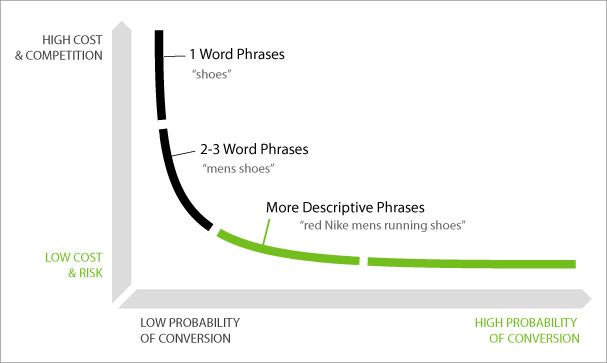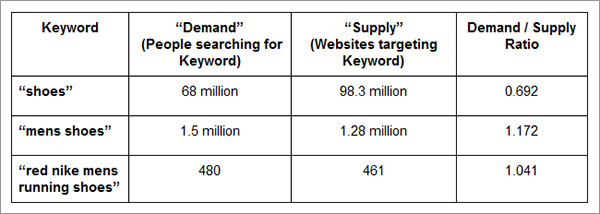Rand Fishkin from SEOmoz once suggested that the fundamental factors of conducting sustainable SEO is through a hierarchy of factors. These factors include:
1) Creating Valuable Content
2) Keyword Research and Targeting
3) Link Building
4) Social Integration
The Social Metrics PRO blog has been providing lots of information on content creation, such as creating infographics, journalistic copywriting as well as press release writing.
Being a blog that focuses primarily on social media networks and signals, it is also inevitable that quite a number of articles have covered the ways that we do social media marketing, generate social signals and get ourselves ranked higher on search engine result pages.
As such, the purpose of this article would focus on keyword research, link building and for the coup de grace – 15 simple ways to optimize your content for sustainable SEO.
But what is sustainable SEO?
Sustainable SEO is basically SEO – for the long term.
Is that possible?
Of course it is.
There’s always a general solution to any problem and it’s all about pre-empting the source that gives us so much trouble and difficulty – Google.
Google is awesome undeniably, and has changed the way we do many things online but for any Internet Marketer, it could be a nightmare due to its menacing and deadly penalizing techniques that can send a webpage from number 1 to nowhere on SERPs overnight.
So what do we do? We try our best to please (through SEO) Google and always keep ourselves in its good books. But at the end of the day, who are the people Google is trying to please?
That’s right – the users. People who search for things daily whether it’s for school, work, play or just general knowledge consumption.
So as an Internet Marketer, the greatest implication of this is that we shouldn’t always be finding ways to please Google but in fact, we should be pleasing our visitors, which brings us back to the 4 main factors of sustainable SEO.
1) Creating Valuable Content
2) Keyword Research and Targeting
3) Link Building
4) Social Integration
Let’s begin with keyword research and targeting.
Keyword Research and Targeting
To start with, you’ll need to know your keyword – the word or phrase you’d expect someone to type in when looking for your post.
But how do we know what keyword you should be targeting?
This is the graph we use to determine which keywords we should target.
On the vertical axis, we have number of monthly searches and on the horizontal the number of available keywords in existence.
Let’s get into detail what this graph tells us:
Single Keyword Phrases
As seen from the graph, keywords like these are fairly simple and tells us that the person searching for this keyword is not exactly informed about his/her search so for example, “shoes”.
Naturally, if you’re a company selling shoes, you would want to target this keyword — but so would millions of other companies, meaning it is extremely competitive to target such a simple keyword.
The screenshot above shows the “supply” – the number of people who are trying to to target the keyword “shoes”. The reason why we’ve used the ‘intitle’ function is to filter those webpages that have “shoes” in their title, as opposed to having “shoes” in their content while having a completely unrelated title. This actually shows websites targeting the specific keyword.
This screenshot above taken from Google Adwords Tool shows the “demand” – of people actually searching for the keyword “shoes” itself.
As such, for this keyword to actually convert to profit is actually extremely difficult, but let’s have a look at the other keywords before judging too quickly.
2-3 Keyword Phrases
This is closer to the way how standard users would perform their search online, and most marketers and companies would target these type of keywords, for example “mens shoes” if you’re a company that sells shoes specifically for males.
As we can see from the above screenshot, the supply shows 21.2 million websites targeting the keyword phrase, “mens shoes”.
Moving over to this above example, the number of monthly searches seem pretty good at 1.5 million.
Descriptive Keyword Phrases
These are the rare ones that people don’t usually search for but, this are the keywords where most people are almost ready to commit and make a purchase transaction – these keywords usually have the highest conversion probability. These are known as “Long-tailed keywords”.
As we can see here, there is a significant drop in the number of people targeting such a specific keyword term.
However, Google Adwords Tool also shows a corresponding decrease in the number of people searching for this keyword phrase and because of all the data we’ve collected, we’re now ready to make a better conclusion.
Choosing the Right Keyword
Let’s have a look and see what we can conclude from the information collected:
As we can see, long tail keywords may seem to have the highest conversion, but are not necessarily the most profitable as it also depends on factors such as the “demand” of the keyword.
In our little analysis, a shoe company targeting the male demographic would stand to gain the most if they were to target the keyword “mens shoes”.
A general keyword search demand-to-supply ratio should be more than 1 and believe me when I say that you’ll definitely benefit in the long run for sustainable SEO.
It becomes conclusive that with the right keyword research and targeting – anyone will definitely benefit from their SEO Marketing campaign.
Let us now begin putting our keywords into action.
15 Critical On-Page Optimization Factors for Sustainable SEO
So by now you should have found your keywords and used tools such as Google’s Adwords Tool as well as their intitle search function just to do some simple keyword research and targeting.
Great. What’s next?
It’s time to strategically place our keywords into our content to gain maximum on-page SEO.
Decorative and Organizational Factors
1. Bold, Underline and Italicize Keywords
Users can’t instantly read all of your content in a post. Using font decorations such as bold, italics and underline for keywords helps your post content stand out and easily capture the attention of your audience, as well as Google’s.
2. Inserting your Keyword in Post Title
These are the first thing that users always look for on SERPs and is one of the determinants for them click through. So make sure to keep it short and succinct to appeal both to readers and search engines.
3. Using H1, H2 and H3 tags to Organize your Content.
Header tags serve the sole purpose of allowing readers to easily capture ideas or topics in a glance. Use these to help organize what the content is all about into easily digestible portions.
Link Building Factors
4. Including Keywords in Page URL
Refrain from meaningless site URLs such as http://www.mywebsite.com/18ruf83294/ as these don’t make any sense to both readers and Google crawlers. Make sure you customize the page’s URL by including your keyword into it.
5. Internal Links with keyword as anchor text
Link your pages together to improve site navigation, user experience and reduce bounce rate.
Visitors save time and are able to easily find what they’re looking for all on one page. A great example of a website that does this well is Wikipedia.
6. External links with keyword as anchor text
Linking to other websites also improves SEO, even though you’re sending traffic away, credible and trustworthy outbound links instills better rankings for your page.
Content Factors
7. Keywords in first and last sentences
Using keywords in the first sentences of a has shown highest correlation with high rankings, and subsequent positions correlate nearly flawlessly to lower rankings. Google crawlers determine how relevant an article from the positioning of keywords.
8. Keeping a healthy keyword density
The general benchmark is to keep keywords between 2-3% of the entire word count. Make sure there’s enough for Google’s to know what your content’s about, and not too many such that readers would find it annoying and drop off.
9. Image Optimizing
Visual imagery is important in content creation, but in the eyes of Google, they’re pretty much invisible. Include your keywords in the “Alt. Texts” of your images so that the search engines know what your image is about.
10. Using LSI keywords
I’m sure you’ve seen the recommendations Google provides you whenever you’re searching for something, yet you haven’t completely finished typing your search term? Those are LSI keywords – Google’s system of relating words together through user search behavior. In essence, always try to use words that are similar related together. Alternatively, you can use a WordPress plugin for SEO that does the job for you.
11. Including keywords in META description
Similar to the page’s title, this is the secondary determinant of how a user decides whether to click onto your page or not. Make sure your snippets are descriptive and concise, includes your keywords and under 200 characters. Both users and Google sees this.
12. Including keywords in META keywords
META keywords are for Google crawlers that directly tell them what that page is all about. Users can’t see this but it is still important to make them as relevant as possible.
13. Word Count
A webpage’s rankings depend mostly on textual content, so crawlers focus more on what is written as opposed to images and advertisements. General articles tend to rank most optimally at around 800-1500 words while press releases are good between 300-800.
14. Site Speed
This is pretty straightforward – the faster your site loads up, the less likely people leave. However, if it takes a long time to load, user tolerance for waiting becomes a key determinant in the page’s bounce rate.
15. Advertisements
We like to use ads to earn money and promote stuff but as consumers, we absolutely detest it. Google crawlers can’t really see them but they’re pretty much like images – if they can’t be seen, they can’t be ranked.
And that’s it – 15 on-page optimization factors for sustainable SEO at your disposal.
Hope this article has been of use if you find the on-page optimization process too tedious, you can alternatively check out the automated on-page SEO personal advisor, SEOPressor. This WordPress plugin for SEO is now at version 5 and it is literally like having an SEO consultant right beside you, informing you of every on-page factor you need to do, and reminding you about the ones that you have missed out.
No related posts.














